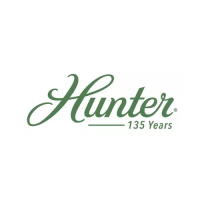TUNING THE H44 B&R RIG
PAGE 52
The easiest method for tuning the B&R rig is
to perform step one as follows before the
mast is stepped, with it lying aft side down
on two sawhorses. Begin with all rigging
slack. If the mast is already stepped, loosen
all the rigging, and then proceed to step one.
1. Start with all the rigging slack. Then
induce the mast bend by tightening the
reverse diagonals (diamonds). Measure
the bend by tensioning a line or the main
halyard between the masthead and the
gooseneck. The maximum amount of
bend should be no more than 8” [203mm]
for the standard rig and no more than 2”
[50mm] for the furling mast. Measured
perpendicular from the aft face of the
mast to the halyard at the deepest part
of the bend. It can be less than that
based on the sail shape and your own
preference. The bend should also be
evenly distributed along the mast to give
a smooth shape. Keep in mind that
bending a furling mast may make it more
difficult to furl and will not do much to
flatten the sail as in a standard rig. It is
very important that the mast also be
straight from side to side at this time.
Tighten or loosen the reverse diagonals
to achieve this.
2. Step the mast with all shrouds attached
but with the turnbuckles completely
loosened (if the mast was not already
stepped).
3. Attach the jib halyard to a cleat on the
bow to support the mast in a raked
position (the masthead should be about
2’-0” [~6cm] behind the step). Attach
the verticals and tighten them until you
can just see the hole for the cotter pin in
the turnbuckle. Tighten the jib halyard
until you can attach the forestay. At this
point the masthead should be raked so
that a weight hung on the main halyard
hangs about 1’ behind the mast step.
4. Use the main halyard to check that the
mast is centered from side to side. Pull
it tight and mark the halyard next to the
verticals chainplate. Now do the same
to the other side to see if the marks line
up. If not, tighten and/or loosen the
verticals until the marks line up. Once
the masthead is centered, begin
tightening the verticals until the
turnbuckles are approximately half
closed. While tightening the verticals
you may notice the bend in the mast
increasing. Now you can tighten the
lowers, which will tend to straighten the
lower part of the mast. Be sure to
tighten port and starboard sides evenly.
5. Now you should tighten the headstay
until it is approximately half closed as
well. This should induce the appropriate
amount of headstay tension. Never use
anything more than a pair of wrenches
to tighten your rigging. If you use an
extended piece of pipe on the handle of
a wrench you can over tighten the
rigging and do damage to the mast or
rigging.
6. On the Hunter 44 it is necessary to go up
the mast in a bosun’s chair to tighten
the number 2 diagonal shroud (D2 or
intermediate shroud). Always use
caution when “going aloft”. You should
always use a mountain climbing harness
or Bosun’s Chair intended for this use.
Always tie into the harness with the
halyard using a bowline and then secure
the shackle as a back up as the knot is
more reliable than a mechanical
fastener. The person hoisting you aloft
should keep the halyard stopper closed
to prevent falls. Good communication
between the two of you is also
important. Tighten the D2 until it has
just become tight and then add two
complete turns. While at the first
spreader, look up the back of the mast
to see if it is straight (rather than bent
from side to side). If it is not straight
then adjust the appropriate D2 to
straighten it.
7. Have the person on deck carefully lower
you. They should keep the halyard
wrapped at least twice around the winch
and should always have one hand able to
stop the halyard from running free. Once
on deck look up the back of the mast
and see if it is straight (rather than bent

